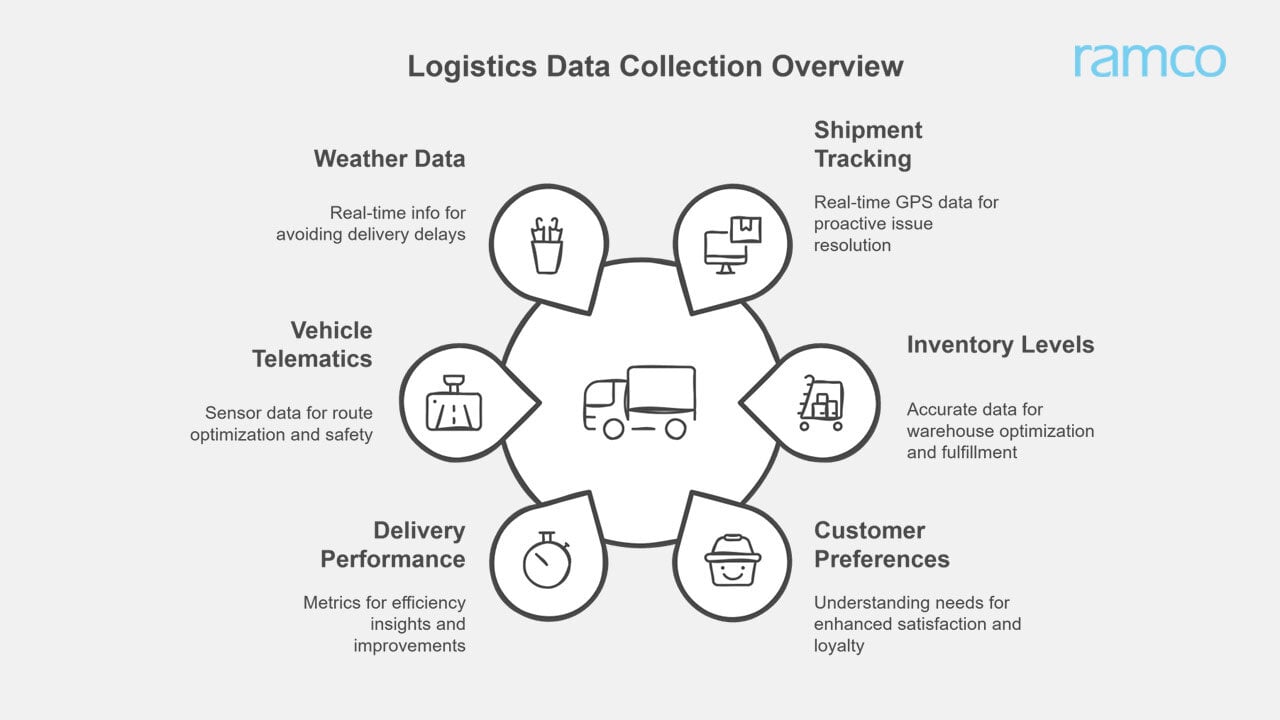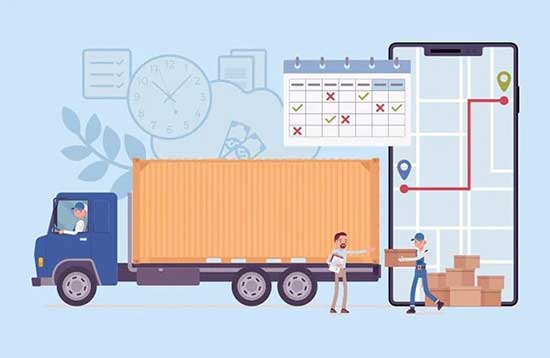

Data is crucial for logistics companies to achieve operational excellence and competitive edge. For third-party logistics (3PL) providers, the ability to harness data effectively can mean the difference between thriving in the market and falling behind. Moreover, the digital transformation of the logistics industry has led to an unprecedented surge in data generation—from shipment tracking and inventory levels to customer behavior and delivery performance.
Yet, with this wealth of information at their fingertips, a critical question arises: Are 3PLs making the most of their data to stay ahead in the market? This blog explores how 3PLs can unlock the full potential of their data using WMS software and TMS software, navigate challenges, and drive innovation in an increasingly data-driven industry.
The Growing Importance of Data Analytics in Logistics
The logistics industry is undergoing a dramatic transformation, fueled by the explosion of data. From the moment a product leaves the warehouse to its final delivery, a digital trail is created. Leveraging this data effectively is no longer a luxury, but a necessity for survival and success in today's competitive landscape.
Types of Data Collected in Logistics:

- Shipment Tracking: Real-time GPS data provides visibility into the location and status of shipments, enabling proactive issue resolution and improved delivery times.
- Inventory Levels: Accurate inventory data is crucial for optimizing warehouse space, minimizing stockouts, and ensuring timely order fulfillment.
- Customer Preferences: Understanding customer needs, such as preferred delivery times, delivery locations, and communication channels, enhances customer satisfaction and loyalty.
- Delivery Performance: Metrics like on-time delivery rates, delivery attempts, and customer feedback provide valuable insights into operational efficiency and areas for improvement.
- Vehicle Telematics: Data from vehicle sensors, such as fuel consumption, engine performance, and driver behavior can optimize routes, reduce costs, and improve driver safety.
- Weather Data: Real-time weather information can be integrated into route planning to avoid delays and ensure timely deliveries, especially in regions prone to extreme weather conditions.
Challenges in Utilizing Logistics Data
- Data Silos: Data is often fragmented across different systems and departments, making it difficult to gain a comprehensive view of the entire logistics operation.
- Unstructured Data: A significant portion of logistics data, such as customer feedback and driver logs, is unstructured, making it challenging to analyze and extract meaningful insights.
- Lack of Analytics Expertise: Many logistics companies lack the in-house expertise to effectively analyze and interpret the vast amounts of data they collect.
- Data Security and Privacy: Ensuring the security and privacy of sensitive customer and business data is paramount, requiring robust data protection measures.
Strategies for 3PLs to Harness Data Analytics in Logistics
One of the most crucial strategies for 3PLs to effectively leverage data analytics is to adopt an integrated logistics solution.
The Importance of Integrating All Data Sources:
An integrated logistics solution seamlessly connects various software systems within the 3PL's operations, such as:
- Transportation Management System (TMS software): Tracks shipments, manages carrier relationships, and optimizes routes.
- Warehouse Management System (WMS software): Controls inventory, manages warehouse operations, and tracks order fulfillment.
- Customer Relationship Management (CRM software): Manages customer interactions, tracks sales, and analyzes customer preferences.
By integrating these systems, 3PLs can break down data silos and create a single source of truth for all logistics-related information, enhancing data analytics in logistics. This holistic view of the entire supply chain provides valuable insights that would otherwise be hidden within fragmented data sources..
Invest in Advanced Analytics Tools
To truly unlock the potential of logistics data, 3PLs must invest in advanced analytics tools. Most advanced WMS software and TMS software come embedded with these analytics tools.
- Leverage Predictive and Prescriptive Analytics:
- Predictive analytics enabled by WMS software and TMS software can forecast future events, such as potential delays, demand fluctuations, and equipment failures. This allows 3PLs to proactively address challenges and mitigate risks.
- Prescriptive analytics goes beyond prediction by providing recommendations for the best course of action. For example, it can suggest optimal routes, recommend the most efficient inventory levels, and identify the best pricing strategies.
- The Role of AI and Machine Learning:
- Using AI and machine learning algorithms in WMS software and TMS software can analyze vast amounts of data to identify complex patterns and trends that might be missed by human analysts.
- Machine learning models can be used for tasks such as:
- Predicting delivery times: By considering factors like traffic, weather, and historical delivery data.
- Optimizing route planning: By analyzing real-time traffic conditions and identifying the most efficient routes.
- Detecting anomalies: Such as unexpected delays, equipment malfunctions, and potential security threats.
- Improving demand forecasting: By analyzing historical sales data, market trends, and external factors.
Turning Insights into Advantage: How WMS Software and TMS Software can help
The goal of data analytics in logistics is to gain a competitive advantage. By implementing WMS software and TMS software, 3PLs can leverage data insightsand
- Improve Customer Satisfaction:
- Accurate ETAs: Predictive analytics can provide more accurate estimated time of arrivals, improving customer trust and reducing frustration.
- Transparent Communication: Proactive communication regarding potential delays or issues, based on real-time data analysis, enhances customer satisfaction.
- Optimize Resource Allocation:
- Fleet Utilization: Analyzing data offered by TMS software can optimize fleet utilization by identifying underutilized vehicles, optimizing routes, and improving driver schedules.
- Warehouse Management: Analyzing inventory data obtained from WMS software can help optimize warehouse space, reduce storage costs, and improve order fulfillment accuracy.
- Identify New Market Opportunities and Trends:
- Analyze market trends, competitor activity, and customer preferences to identify new service offerings, expand into new markets, and develop innovative solutions.
- For example, analyzing customer data can reveal emerging demand for specialized services, such as temperature-controlled transportation or last-mile delivery solutions.
Key Applications of Data Analytics in Logistics: Role of TMS and WMS
Tools like WMS software and TMS software offer 3PLs data analytics in logistics at their fingertips.. Through these tools, they can:
- Route Optimization:
- Analyzing historical data, real-time traffic, and weather patterns offered by TMS software allows for the optimization of delivery routes.
- This minimizes travel time, reduces fuel consumption, and lowers carbon emissions.
- Inventory Management:
- Inventory analytics offered by WMS software helps predict demand, prevent stockouts, and minimize overstocking.
- By analyzing sales data and market trends, companies can ensure they have the right amount of inventory on hand at the right time.
- Predictive Maintenance:
- By analyzing equipment maintenance data offered by both WMS software and TMS software, companies can predict potential failures and schedule maintenance proactively.
- This minimizes downtime, reduces repair costs, and improves equipment lifespan.
- Risk Management:
- Data analytics can identify potential risks, such as delays, disruptions, and security threats.
- This allows companies to take proactive measures to mitigate risks and ensure the smooth flow of goods.
Conclusion
In conclusion, WMS software and TMS software offering data analytics in logistics have the potential to revolutionize the logistics industry. By leveraging the wealth of data generated by their operations, 3PL providers can unlock significant operational efficiencies, enhance customer satisfaction, and gain a decisive edge in the competitive market. From optimizing routes and improving inventory management to predicting demand and mitigating risks, data-driven insights empower 3PLs to make informed decisions, streamline operations, and deliver exceptional service. The result? A more agile, responsive, and customer-centric business model.
Take the first step towards transforming your logistics operations. Explore Ramco’s cutting-edge logistics solutions designed to help you unlock the full potential of your data. Schedule a consultation today for tailored insights that can revolutionize your business. Don’t let your data sit idle—turn it into your strongest asset with data analytics in logistics.
Discover more with our eBooks to learn how implementing WMS and TMS can elevate your operations:


